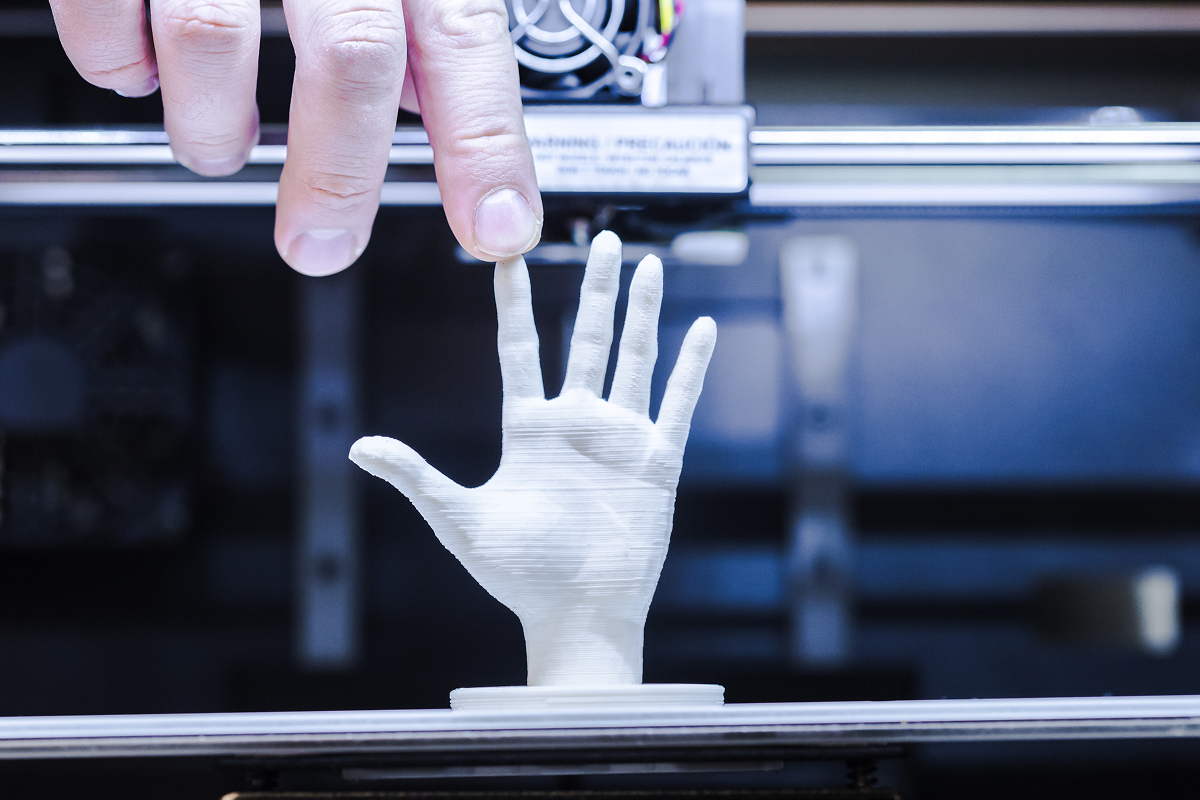3D Printed Organs: An Exceptional Frontier in Healthcare Innovation
Bioprinting is a trending direction for innovative solutions in care. 3D printed organs are a result of hard work started in 1993, when Joseph P. Vacanti used tissue engineering to resolve clinical transportation issues. Despite the limited progress in creating alternatives to tissues and organs, different advanced technologies, namely microfluidics, organ-on-chip, and 3D printing, have progressed in medicine. 3D printed organs significantly contributed to tissue engineering, cell biology, and drug testing, standing as an affordable, biocompatible material.
3D Printed Organs: Pros and Cons Explained
It is reasonable to summarize technology to understand its current benefits and drawbacks. At the current stage, professionals use and actively develop bioprinters to implement bioprinting techniques to replicate cells or tissues. These devices utilize hardware and software to recreate these prototypes, while this process uses different bioinks to achieve these goals. Hypothetically, with the continuous improvement of these components, professionals can expand the range of what organs can be 3D printed, potentially including complex structures like hearts, kidneys, and lungs.
Pros
By designing prototypes for 3D printed human organs manufacturing, medicine can achieve more realistic goals regarding personalized medicine. The specific advantages include the following:
- Support of surgical training: Artificial organs provide models for practice without risk to the patients’ lives and health.
- Innovation in regenerative medicine: Despite its experimental stage, such innovations have practical applications for repairing or replacing damaged tissues.
- A next-gen solution for drug testing: 3D printed human organs play a critical role in safer and more accurate preclinical testing.
In the context of 3D printed organs’ pros and cons, this original solution has additional advantages over traditional testing and research approaches. Specifically, such bioprinted materials can be highly useful in the food, defense, aerospace, and education sectors.
Cons
Tissue engineering requires substantial research to create scalable and effective solutions for current market needs. Common drawbacks of 3d printed organs development are:
- Limited functionality: The best way to explain the limitation is by answering the question, “What are 3D printed organs made of?”. Current bioprinted organs, tissues, and cells use bioinks that cannot replicate their actual size and biological function.
- Technical limitations: Despite advances in hardware and software, it is not possible to fully replicate complex structures like blood vessels and nerves.
- High cost: Artificial organs are expensive in research and application, which limits their adoption in healthcare.
When discussing 3D Printed organs’ pros and cons, it is essential to envision realistic possibilities of this technology. Despite the limitations and prevailing skepticism in recreating fully-functioning organs, current innovations have introduced new bioinks necessary for overcoming current limitations.
3D Printed Organ Market Trends: What Is Driving Growth in Bioprinting
Professionals continue research and development of bioprinted tissues to support personalized medicine treatment, which is one of the core objectives of the modern healthcare paradigm. The need for cost-effective solutions in the food and drug industry stimulates the growth of the market. Moreover, the adoption of machine learning creates new opportunities for optimizing the technology. Artificial organs are further ethical alternatives for testing experimental vaccines and drugs, which do not undermine the quality of research.
Current Challenges
The current prospects of 3D printed artificial organs application in care denote their application for bone infection treatment. However, the development of sustainable solutions is a resource-consuming and challenging process. The 3D printed organs market faces several common obstacles, including but not limited to:
- Ethical and Legal Aspects. Companies face challenges in advancing 3D printed artificial organs technology is creating legislative frameworks necessary to regulate scientific research. Moreover, professionals in the field continue to face ethical scrutiny, with ongoing debates questioning the legitimacy and conduct of their practices.
- Scalability Issues. Professionals struggle to create a standardized approach to the manufacturing of 3d printed organs. Lack of stable prototypes adds complexity to the scaling process in addition to limitations of bioprinters and bioinks.
- Limited Practical Application. While it is still not possible to create 3D printed organs for transplant, specialists struggle to create human-sized prototypes. This issue results in a deficit of bioprinted material for current scientific and medical needs.
- Talent Shortage. Research and development of 3D printed artificial organs require qualified labor. Despite the best efforts, this promising direction in modern medicine is still overlooked due to its experimental limitations.
The market currently lacks attractiveness due to its high risks and inherent complexities. As a result, increased governmental and institutional involvement is essential to address these challenges and boost investor confidence in the technology, which appears increasingly likely in the foreseeable future.
Future Perspectives of 3D Printed Organs Technology
According to the study, 4D bioprinting represents the next generation of this technology, offering dynamic, time-responsive features in synthetic tissues that enhance traditional research approaches. Many scholars remain critical of the idea that 3D printed human organs could substitute human donors, dismissing it as a concept rooted in science fiction rather than current medical reality. However, creating scalable and acceptable biomaterials for advancing scientific research is possible with the development of new bioinks, bioprinters, and the integration of AI-powered tools.
Top Startups Advancing Healthcare with 3D Printed Organs
1. CELLINK
This startup is a leader among available bioprinting solutions. CELLINK has also become one of the unicorns while actively collaborating with reputable organizations in advancing medical solutions. From cancer treatment to advanced therapeutics, this startup set industry standards while adding credibility to the market. Moreover, CELLINK is also a popular provider of 3D bioprinters, which contributes to cross-industry collaboration.
2. Brinter
The next company actively participates in drug testing and the development of personalized medicine for cancer treatment. While Brinter adopts the latest bioinks for meeting different research and development needs, this startup builds a solid foundation for the 3D printed organs market, contributing to the next generation of healthcare solutions. This brand is also regarded as the most versatile bioprinting company.
3. VoxCell BioInnovation
This startup focuses on creating advanced bioinks for research and drug discovery. VoxCell BioInnovation stands as a vital company in expanding the 3D printed organs niche by providing its solutions. 2024 was also a pivotal moment for the company’s history as VoxCell won the growth award, strengthening its reputation. This startup continues strengthening its market leadership, which further shapes the optimistic future for 3D printed artificial organs by driving innovation in tissue engineering.
4. Organovo
The featured startup has achieved notable breakthroughs in metabolic disease and oncology by developing FXR314. Such innovative solutions have a critical role in strengthening interest in creating solutions for artificial organs. Organovo also secures its market leadership by establishing strategic partnerships and collaborations with healthcare providers. Moreover, one of its crucial achievements is the creation of liver tissues, which play a critical role in advancing research on 3D printed organs for transplantation.
5. Poietis
By focusing on the development of next-gen bioprinting technology, Poietis aggressively pushes the boundaries of the market. The startup also admits that its products ensure high cell vitality and versatility necessary for advanced research with clinical applications. Additionally, the company created strategic alliances to support a project designated to treat neurodegenerative disorders. Poietis is also actively investing in 4D bioprinting technology, which has the potential to revolutionize traditional 3D bioprinting by introducing dynamic, time-responsive tissue development.
6. Aspect Biosystems
Aspect Biosystems is an outstanding company that actively uses AI technology to advance tissue engineering. By seizing new opportunities and strategic partnerships, this startup strengthens its market position while shaping the future of bioprinting. Specifically, the recreated tissues have proven their efficiency in creating treatments for metabolic and endocrine diseases. Undoubtedly, Aspect Biosystems has a fresh and inspiring vision of 3D bioprinting.
7. MedPrin
This startup tackles the criticism by offering functional prototypes of bioprinted human organs. MedPrin has introduced the implantable neurological devices pathway, confidently seizing an influential market position. This company also offers a wide product range designed for neurosurgery, showcasing its excellence in designing innovative solutions. MedPrin further stands as one of the pioneers in 3D bioprinting.
8. PrintBio
This startup complements the list by offering tailored solutions for using experimental tissues. Moreover, PrintBio has developed unique products for meeting undergoing plastic and reconstructive surgery while receiving legal approval. This startup is a relatively new company that strives to refresh the vision of bioprinting technologies. New names like PrintBio nurture confidence in the future of bioprinting and tissue engineering.
Concluding Thoughts
It is reasonable to admit that the current stage of tissue engineering provides limited prototypes for recreating human organs. While there are influential startups that strive to push common limitations, professionals are still actively working on solidifying the market’s credibility. However, there is significant progress in treating cancer and transplanting tissues, which will increase the attractiveness of this technology to investors. The projected trends focus on specific niches, while startups will actively deploy AI solutions to improve their product designs.
Frequently Asked Questions (FAQ)
Q: What are the primary applications of 3D printed organs?
A: Bioprinted products have wide adoption in transplant research, drug testing, surgical training, and regenerative medicine, which improves the quality of scholarly research, experimental trials, and education.
Q: What organs can be 3D printed?
A: Current projects succeeded in recreating organs and tissues such as skin, blood vessels, trachea, bladders, and livers, while complex organs require further development.
Q: What are 3D printed organs made of?
A: The primary material is bio-inks, which can contain synthetic and biological components, for example, hydrogel-based material.





